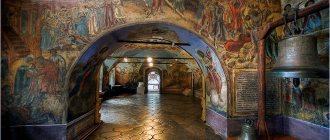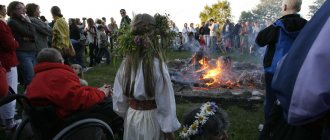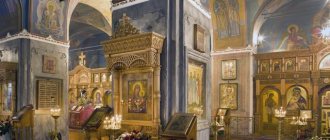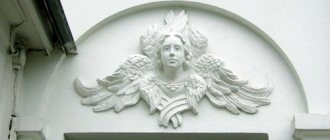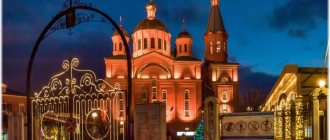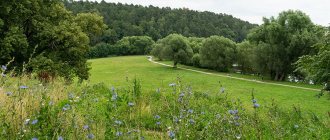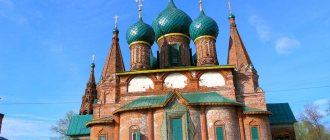Mir
Russia Trans-Baikal Territory Map loading in progress...
{"format":"leaflet","minzoom":false,"maxzoom":false,"limit":50,"offset":0,"link":"all","sort":[""], "order":[],"headers":"show","mainlabel":"","intro":"","outro":"","searchlabel":"\u2026 \u0441\u043b\u0435\ u0434\u0443\u044e\u0449\u0438\u0435 \u0440\u0435\u0437\u0443\u043b\u044c\u0442\u0430\u0442\u044b","default":"","import-annotation":false,"width ":"auto","height":"400px","centre":{"text":"","title":"""link":"""lat":52.2485209999999966612449497915804386138916015625,"lon": 115.9563250000000067529981606639921665191650390625,"icon":""},"title":"","label":"","icon":"","lines":[],"polygons":[],"circles":[ ],"rectangles":[],"copycoords":false,"static":false,"zoom":7,"defzoom":14,"layers":["OpenStreetMap"],"image layers":[] ,"overlays":[],"resizable":false,"fullscreen":true,"scrollwheelzoom":true,"cluster":true,"clustermaxzoom":7,"clusterzoomonclick":true,"clustermaxradius":80, "clusterspiderfy":true,"geojson":"","clicktarget":"","showtitle":true,"hidenamespace":false,"template":"","userparam":"","activeicon": "","pagelabel":false,"ajaxcoordproperty":"","ajaxquery":"","locations":[{"text":"\u003Cb\u003E\u003Ca href=\"/palomnik/%D0% 96%D0%B5%D0%BD%D1%81%D0%BA%D0%B8%D0%B9_%D0%BC%D0%BE%D0%BD%D0%B0%D1%81%D1%82% D1%8B%D1%80%D1%8C_%D0%92%D1%81%D0%B5%D1%85_%D1%81%D0%B2%D1%8F%D1%82%D1%8B%D1% 85._%D0%B2_%D0%B7%D0%B5%D0%BC%D0%BB%D0%B5_%D0%A0%D1%83%D1%81%D1%81%D0%BA%D0% BE%D0%B9_%D0%BF%D1%80%D0%BE%D1%81%D0%B8%D1%8F%D0%B2%D1%88%D0%B8%D1%85_(%D0%90 %D1%82%D0%B0%D0%BC%D0%B0%D0%BD%D0%BE%D0%B2%D0%BA%D0%B0)\» title=\»\u0416\u0435\u043d\ u0441\u043a\u0438\u0439 \u043c\u043e\u043d\u0430\u0441\u0442\u044b\u0440\u044c \u0412\u0441\u0435\u0445 \u0441\u0432\u044f\u 0442\u044b\u0445,\u0432\u0437 \u0435\u043c\u043b\u0435 \u0420\u0443\u0441\u0441\u043a\u043e\u0439 \u043f\u0440\u043e\u0441\u0438\u044f\u0432\u0448\u0438\ u0445 (\u0410\u0442\u0430\ u043c\u0430\u043d\u043e\u0432\u043a\u0430)\»\u003E\u0416\u0435\u043d\u0441\u043a\u0438\u0439 \u043c\u043e\u043d\u0430\u0441\ u0442\u044b\u0440\u044c \u0412\u0441\u0435\u0445 \u0441\u0432\u044f\u0442\u044b\u0445, \u0432 \u0437\u0435\u043c\u043b\u0435 \u0420\u0443\u0441\u04 41\u043a\u043e\u0439 \u043f\ u0440\u043e\u0441\u0438\u044f\u0432\u0448\u0438\u0445 (\u0410\u0442\u0430\u043c\u0430\u043d\u043e\u0432\u043a\u0430)\u003C/a\ u003E\u003C/b\ u003E","title":"\u0416\u0435\u043d\u0441\u043a\u0438\u0439 \u043c\u043e\u043d\u0430\u0441\u0442\u044b\u0440\u044c \u0412\u0441\u0 435\u0445\u0441 \u0432\u044f\u0442\u044b\u0445, \u0432 \u0437\u0435\u043c\u043b\u0435 \u0420\u0443\u0441\u0441\u043a\u043e\u0439 \u043f\u04 40\u043e\u0441\u0438\u044f\ u0432\u0448\u0438\u0445 (\u0410\u0442\u0430\u043c\u0430\u043d\u043e\u0432\u043a\u0430)»»link»:»»»lat»:51.9293910000000025206645659 6367061138153076171875,"lon":113.6371170000000034860931918956339359283447265625, "icon":"/palomnik/images/f/f8/Yellow_marker.png"},{"text":"\u003Cb\u003E\u003Ca href=\"/palomnik/%D0%98%D0%BE%D0% B0%D0%BD%D0%BD%D0%BE-%D0%A0%D0%BE%D0%B6%D0%B4%D0%B5%D1%81%D1%82%D0%B2%D0%B5 %D0%BD%D1%81%D0%BA%D0%B8%D0%B9_%D1%85%D1%80%D0%B0%D0%BC_(%D0%A7%D0%B8%D1%82% D0%. 438\ u0439 \u0445\u0440\u0430\u043c (\u0427\u0438\u0442\u0430)\»\u003E\u0418\u043e\u0430\u043d\u043d\u043e-\u0420\u043e\u0436\u043 4\u0435\u0441\u0442 "" title": "" \u0445\u0440\u0430\u043c (\u0427\u0438\u0442\u0430)","link":"""lat":52.035167000000001280568540096282958984375,"lon":113.448616999999998711246007587760686874 3896484375,"icon":"/palomnik/images/c/ce/Green_marker.png"} ,{"text":"\u003Cb\u003E\u003Ca href=\"/palomnik/%D0%9A%D0%B0%D0%B7%D0%B0%D0%BD%D1%81%D0%BA%D0 %B8%D0%B9_%D0%BA%D0%B0%D1%84%D0%B5%D0%B4%D1%80%D0%B0%D0%BB%D1%8C%D0%BD%D1%8B %D0%B9_%D1%81%D0%BE%D0%B1%D0%BE%D1%80_(%D0%A7%D0%B8%D1%82%D0%B0)\» title=\»\u041a \u0430\u0437\u0430\u043d\u0441\u043a\u0438\u0439 \u043a\u0430\u0444\u0435\u0434\u0440\u0430\u043b\u044c\u043d\u044b\u0439 u0441\u043e\u0431\u043e\u0440 (\u0427\u0438\u0442\u0430)\»\u003E\u041a\u0430\u0437\u0430\u043d\u0441\u043a\u0438\u0439 \u043a\u0430\u0444\u0435\u0434\u044 0\u0430\u043b\u044c \u043d\u044b\u0439 \u0441\u043e\u0431\u043e\u0440 (\u0427\u0438\u0442\u0430)\u003C/a\u003E\u003C/b\u003E","title":"\u041a\u0430\ u0437\u0430\u043d\u0441\u043a\u0438\u0439 \u043a\u0430\u0444\u0435\u0434\u0440\u0430\u043b\u044c\u043d\u044b\u0439 \u0441\u0 43e\u0431\u043e\u0440 (\u0427 \u0438\u0442\u0430)","link":"","lat":52.03012600000000276168066193349659442901611328125,"lon":113.4967570000000023355823941528797149 658203125,"icon":"/palomnik/images/c/ce/Green_marker.png"},{" text":"\u003Cb\u003E\u003Ca href=\"/palomnik/%D0%A1%D0%B2%D1%8F%D1%82%D0%BE-%D0%9D%D0%B8%D0%BA %D0%BE%D0%BB%D1%8C%D1%81%D0%BA%D0%B8%D0%B9_%D1%85%D1%80%D0%B0%D0%BC_(%D0%90% D0%B3%D0%B8%D0%BD%D1%81%D0%BA%D0%BE%D0%B5)\» title=\»\u0421\u0432\u044f\u0442\u043e-\u041d\u0438\ " \u003E\u0421\u0432\ u044f\u0442\u043e-\u041d\u0438\u043a\u043e\u043b\u044c\u0441\u043a\u0438\u0439 (\u0445\u0440\u0430\u043c 043d\u0441\u043a\u043e\ u0435)\u003C/a\u003E\u003C/b\u003E","title":"\u0421\u0432\u044f\u0442\u043e-\u041d\u0438\u043a\u043e\u043b\u044c\u0441\u043a\u043 8 \u0439 \u0445\u0440\u0430\u043c (\u0410\u0433\u0438\u043d\u0441\u043a\u043e\u0435)”,”link”:”””lat”:51.1054099999999991155164025258 2728862762451171875,"lon":114.543664000000006808477337472140789031982421875," icon":"/palomnik/images/c/ce/Green_marker.png"},{"text":"\u003Cb\u003E\u003Ca href=\"/palomnik/%D0%A1%D0%B2%D1%8F %D1%82%D0%BE-%D0%9F%D0%B5%D1%82%D1%80%D0%BE%D0%BF%D0%B0%D0%B2%D0%BB%D0%BE% D0%B2%D1%81%D0%BA%D0%B8%D0%B9_%D1%85%D1%80%D0%B0%D0%BC_(%D0%A8%D0%B8%D0%BB%D0 %BA%D0%B0) \ "Title = \" \ U0421 \ U0432 \ U044F \ U04442 \ U043E- \ U041F \ U0435 \ U04442 \ U04440 E043E \ U043F \ U0430 L \ u0432 \ u0441 \ u043a \u0438\u0439 \u0445\u0440\u0430\u043c (\u0428\u0438\u043b\u043a\u0430)\»\u003E\u0421\u0432\u044f\u0442\u043e-\u041f\u0435\u0 442\u0440\u043e\ u043f\u0430\u0432\u043b\u043e\u0432\u0441\u043a\u0438\u0439 \u0445\u0440\u0430\u043c (\u0428\u0438\u043b\u043a\u0430)\u003C/a \u003E\u003C/b\ u003E","title":"\u0421\u0432\u044f\u0442\u043e-\u041f\u0435\u0442\u0440\u043e\u043f\u0430\u0432\u043b\u043e\u0432\u0441\u043a\u04 38\u0439\ u0445\u0440\u0430\u043c (\u0428\u0438\u043b\u043a\u0430)","link":"","lat":51.854748999999998204657458700239658355712890625,"lon":116.0 26599000000004480170900933444499969482421875,"icon":"/palomnik/images/ c/ce/Green_marker.png"},{"text":"\u003Cb\u003E\u003Ca href=\"/palomnik/%D0%A1%D0%B2%D1%8F%D1%82%D0%BE- %D0%A3%D1%81%D0%BF%D0%B5%D0%BD%D1%81%D0%BA%D0%B8%D0%B9_%D0%BC%D0%BE%D0%BD%D0 %B0%D1%81%D1%82%D1%8B%D1%80%D1%8C_(%D0%9C%D0%BE%D0%BB%D0%BE%D0%BA%D0%BE%D0% B2%D0%BA%D0%B0)\» title=\»\u0421\u0432\u044f\u0442\u043e-\u0423\u0441\u043f\u0435\u043d\u0441\u043a\u0438\u0439 \u043c\u043e\ u043d\u0430\u0441\u0442\u044b\u0440\u044c (\u041c\u043e\u043b\u043e\u043a\u043e\u0432\u043a\u0430)\»\u003E\u0421\u0432\u044f\ u0442\u043e-\u0423 \u0441\u043f\u0435\u043d\u0441\u043a\u0438\u0439 \u043c\u043e\u043d\u0430\u0441\u0442\u044b\u0440\u044c (\u041c\u043e\u043b\ u043e\u043a\u043e\u0432\ u043a\u0430)\u003C/a\u003E\u003C/b\u003E","title":"\u0421\u0432\u044f\u0442\u043e-\u0423\u0441\u043f\u0435\u043d\u0441\u043a\u043 8 ""link":" "," lat":51.98351000000000254885890171863138675689697265625,"lon":113.525047000000000707586877979338169097900390625,"icon":"/palomnik/images/f /f8/Yellow_marker.png"},{"text":"\u003Cb\u003E\u003Ca href=\"/palomnik/ %D0%A1%D0%BE%D0%B1%D0%BE%D1%80_%D0%92%D0%BE%D1%81%D0%BA%D1%80%D0%B5%D1%81%D0 %B5%D0%BD%D0%B8%D1%8F_%D0%A5%D1%80%D0%B8%D1%81%D1%82%D0%BE%D0%B2%D0%B0_(%D0% 9D%D0%B5%D1%80%D1%87%D0%B8%D0%BD%D1%81%D0%BA)\» title=\»\u0421\u043e\u0431\u043e\u0440 \u0412\u043e \u0441\u043a\u0440\u0435\u0441\u0435\u043d\u0438\u044f \u0425\u0440\u0438\u0441\u0442\u043e\u0432\u0430 (\u041d\u0435\u0440\ u0447\u0438\u043d\u0441\ u043a)\u003E\u0421\u043e\u0431\u043e\u0440 \u0412\u043e\u0441\u043a\u0440\u0435\u0441\u0435\u043d\u0438\u044f \u0425\u0440 \u0438\u0441\u0442\u043e \u0432\u0430 (\u041d\u0435\u0440\u0447\u0438\u043d\u0441\u043a)\u003C/a\u003E\u003C/b\u003E","title":"\u0421\u043e\u0431\u043e\ u0440 \u0412\u043e\u0441\u043a\u0440\u0435\u0441\u0435\u043d\u0438\u044f \u0425\u0440\u0438\u0441\u0442\u043e\u0432\u0430 (\u 041d\u0435\u0440\u0447\u0438 \u043d\u0441\u043a)","link":"","lat":51.9787620000000032405296224169433116912841796875,"lon":116.58855400000000201998773263767361640 93017578125,"icon":"/palomnik/images/c/ce/Green_marker.png"},{" text":"\u003Cb\u003E\u003Ca href=\"/palomnik/%D0%A1%D0%BE%D0%B1%D0%BE%D1%80_%D0%92%D0%BE%D1%81% D0%BA%D1%80%D0%B5%D1%81%D0%B5%D0%BD%D0%B8%D1%8F_%D0%A5%D1%80%D0%B8%D1%81%D1% 82%D0%BE%D0%B2%D0%B0_(%D0%A7%D0%B8%D1%82%D0%B0)\» title=\»\u0421\u043e\u0431\u043e\u0440 \u0412\ u043e\u0441\u043a\u0440\u0435\u0441\u0435\u043d\u0438\u044f \u0425\u0440\u0438\u0441\u0442\u043e\u0432\u0430 (\u0427\u0438\u0 442\u0430)\»\u003E\ u0421\u043e\u0431\u043e\u0440 \u0412\u043e\u0441\u043a\u0440\u0435\u0441\u0435\u043d\u0438\u044f \u0425\u0440\u0438\u0441\u0 442\u043e\u0432\u0430 (\u0427 \u0438\u0442\u0430)\u003C/a\u003E\u003C/b\u003E","title":"\u0421\u043e\u0431\u043e\u0440 \u0412\u043e\u0441\u043a\u0440\u0435\u0 441 \u0435\u043d\u0438\u044f \u0425\u0440\u0438\u0441\u0442\u043e\u0432\u0430 (\u0427\u0438\u0442\u0430)","link":"""lat":52.0331649999 9999678038875572383403778076171875," lon":113.5137299999999953570295474492013454437255859375,"icon":"/palomnik/images/c/ce/Green_marker.png"},{"text":"\u003Cb\u003E\u003Ca href=\"/palomnik/%D0% A1%D0 %BF%D0%B0%D1%81%D0%BE-%D0%9F%D1%80%D0%B5%D0%BE%D0%B1%D1%80%D0%B0%D0%B6%D0% B5%D0%BD%D1%81%D0%BA%D0%B8%D0%B9_%D1%85%D1%80%D0%B0%D0%BC_(%D0%A7%D0%B8%D1%82 %D0%B0)\» title=\»\u0421\u043f\u0430\u0441\u043e-\u041f\u0440\u0435\u043e\u0431\u0440\u0430\u0436\u0435\u043d\u0441\u043a\u0438\u 0439 \u0445\u0440\u0430\u043c (\u0427\u0438\u0442\u0430)\»\u003E\u0421\u043f\u0430\u0441\u043e-\u041f\u0440\u0435\u043e\u0431\u04 40\u0430\u0436\ u0435\u043d\u0441\u043a\u0438\u0439 \u0445\u0440\u0430\u043c (\u0427\u0438\u0442\u0430)\u003C/a\u003E\u003C/b\u003E","title":"\u04 21 \u043f\u0430\u0441\u043e-\u041f\u0440\u0435\u043e\u0431\u0440\u0430\u0436\u0435\u043d\u0441\u043a\u0438\u0439 \u0445\u0440\ u0430\u043c (\u0427\u0438 \u0442\u0430)","link":"","lat":52.03441600000000022419044398702681064605712890625,"lon":113.4996859999999969659256748855113983154296 875,"icon":"/palomnik/images/c/ce/Green_marker.png"},{"text" :"\u003Cb\u003E\u003Ca href=\"/palomnik/%D0%A5%D1%80%D0%B0%D0%BC_%D0%A1%D0%BF%D0%B0%D1%81%D0% B0_%D0%9D%D0%B5%D1%80%D1%83%D0%BA%D0%BE%D1%82%D0%B2%D0%BE%D1%80%D0%BD%D0%BE% D0%B3%D0%BE_%D0%9E%D0%B1%D1%80%D0%B0%D0%B7%D0%B0_(%D0%9A%D1%80%D0%B0%D1%81%D0 %BD%D0%BE%D0%BA%D0%B0%D0%BC%D0%B5%D0%BD%D1%81%D0%BA)\» title=\»\u0425\u0440\u0430\u043c\ u0421\u043f\u0430\u0441\u0430 \u041d\u0435\u0440\u0443\u043a\u043e\u0442\u0432\u043e\u0440\u043d\u043e\u0433\u043e\u041e\u0 431\u0440\u0430\u0437\u0430 ( \u041a\u0440\u0430\u0441\u043d\u043e\u043a\u0430\u043c\u0435\u043d\u0441\u043a)\»\u003E\u0425\u0440\u0430\u043c \u0421\u043 f\u0430\u0441\u0430\ u041d\u0435\u0440\u0443\u043a\u043e\u0442\u0432\u043e\u0440\u043d\u043e\u0433\u043e \u041e\u0431\u0440\u0430\u0437\u0430 (\u0 41a\u0440\u0430\u0441\u043d \u043e\u043a\u0430\u043c\u0435\u043d\u0441\u043a)\u003C/a\u003E\u003C/b\u003E","title":"\u0425\u0440\u0430\u043c \u0421\u043f\u0 430 \u0441\u0430 \u041d\u0435\u0440\u0443\u043a\u043e\u0442\u0432\u043e\u0440\u043d\u043e\u0433\u043e \u041e\u0431\u0440\u0430\ u0437\u0430 (\u041a\u0440\ u0430\u0441\u043d\u043e\u043a\u0430\u043c\u0435\u043d\u0441\u043a)","link":"","lat":50.09327400000000096724761533550918102264404296 875,"lon":118.03127299999999877400114201009273529052734375,"icon":"/palomnik /images/c/ce/Green_marker.png"},{"text":"\u003Cb\u003E\u003Ca href=\"/palomnik/%D0%A5%D1%80%D0%B0%D0%BC_%D1 %81%D0%B2%D1%8F%D1%82%D0%B8%D1%82%D0%B5%D0%BB%D1%8F_%D0%9B%D1%83%D0%BA%D0%B8_ %D0%9A%D1%80%D1%8B%D0%BC%D1%81%D0%BA%D0%BE%D0%B3%D0%BE_(%D0%A7%D0%B8%D1%82% D0%B0)\» title=\»\u0425\u0440\u0430\u043c \u0441\u0432\u044f\u0442\u0438\u0442\u0435\u043b\u044f\u041b\u0443\u043a\u0438 u0440\u044b \u043c\u0441\u043a\u043e\u0433\u043e (\u0427\u0438\u0442\u0430)\»\u003E\u0425\u0440\u0430\u043c \u0441\u0432\u044f\u0442\u04 38\u0442\u0435\u043b \u044f \u041b\u0443\u043a\u0438 \u041a\u0440\u044b\u043c\u0441\u043a\u043e\u0433\u043e (\u0427\u0438\u0442\u0430)\u003C/a\u0 03E\u003C/b\u003E ""title":"\u0425\u0440\u0430\u043c \u0441\u0432\u044f\u0442\u0438\u0442\u0435\u043b\u044f \u041b\u0443\u043a\u0438 \u041a\u0440 \u044b\u043c\ u0441\u043a\u043e\u0433\u043e (\u0427\u0438\u0442\u0430)","link":"""lat":52.0367260000000015907062334008514881134033203125,"lon":113. 509219000000001642547431401908397674560546875,"icon":"/palomnik/images/ c/ce/Green_marker.png"},{"text":"\u003Cb\u003E\u003Ca href=\"/palomnik/%D0%A6%D0%B5%D1%80%D0%BA%D0%BE% D0%B2%D1%8C_%D0%90%D1%80%D1%85%D0%B0%D0%BD%D0%B3%D0%B5%D0%BB%D0%B0_%D0%9C%D0% B8%D1%85%D0%B0%D0%B8%D0%BB%D0%B0_(%D0%A7%D0%B8%D1%82%D0%B0)\» title=\»\u0426\u0435\ u0440\u043a\u043e\u0432\u044c \u0410\u0440\u0445\u0430\u043d\u0433\u0435\u043b\u0430 \u041c\u0438\u0445\u0430\u0438\u043b\u0 430 (\u0427\u0438\u0442\u0430 )\»\u003E\u0426\u0435\u0440\u043a\u043e\u0432\u044c \u0410\u0440\u0445\u0430\u043d\u0433\u0435\u043b\u0430 \u041c\u0438\u04 45\u0430\u0438\u043b\ u0430 (\u0427\u0438\u0442\u0430)\u003C/a\u003E\u003C/b\u003E","title":"\u0426\u0435\u0440\u043a\u043e\u0432\u044c \u0410\u0440\u04 45 \u0430\u043d\u0433\u0435\u043b\u0430 \u041c\u0438\u0445\u0430\u0438\u043b\u0430 (\u0427\u0438\u0442\u0430)","link":"","lat":52.0214 5500000000311047188006341457366943359375 ,"lon":113.5129680000000007566995918750762939453125,"icon":"/palomnik/images/c/ce/Green_marker.png"}],"imageLayers":[]}
Temple of the Savior Not Made by Hands (Krasnokamensk)
Transbaikal region
- the subject of the Russian Federation. Located in the eastern part of Transbaikalia. It is part of the Siberian Federal District and is part of the East Siberian Economic Region. The administrative center is the city of Chita.
Content
- 1 Orthodoxy in the Transbaikal region
- 2 Settlements
- 3 Shrines of the Trans-Baikal Territory
- 4 Monasteries of the Trans-Baikal Territory 4.1 Convent of All Saints who shone in the Russian land (Atamanovka)
- 4.2 Holy Dormition Monastery (Molokovka)
- 5.1 Temple of the Savior Image Not Made by Hands (Krasnokamensk)
Orthodoxy in the Trans-Baikal Territory[edit]
After joining Russia, Transbaikalia was part of the then only Siberian diocese - Tobolsk. Since 1727, when the Irkutsk diocese was established, it became part of it, and since 1861 it was included in the Selenga vicariate.
On March 12, 1894, the emperor approved the decision of the Holy Synod on the formation of an independent Transbaikal diocese with a see in the city of Chita.
The Orthodox population in the diocese in 1900 numbered 401,758 people, 338 churches, 225 houses of worship and chapels, 4 monasteries (two for women); in 1902-1903 The diocese had 107 literacy schools and 197 parochial schools (including 8 two-class ones). Church-parish trustees were attached to all churches included in the diocese. In 1900, there were up to 64 thousand people on the territory of the diocese: schismatics, sectarians and Protestants. The diocese included the Chita Theological School and the Diocesan Women's School.
After the October Revolution, renovationists became active in Chita, but it is difficult to unambiguously determine whether the Chita bishops of 1920-1930 belonged to them. In 1930, the Transbaikal diocese under the jurisdiction of Patriarchal Locum Tenens Sergius (Starogorodsky) was abolished. The Renovation Synod on January 21, 1931 divided the Siberian Metropolis into Western and Eastern, and the Chita diocese was determined to be part of the latter.
In 1948, by decision of the Holy Synod, the Irkutsk diocese was restored, which included, among other things, the territory of Transbaikalia. The ruling bishop received the title of Irkutsk and Chita.
By the decision of the Holy Synod of April 21, 1994, the Transbaikal diocese was restored to its former boundaries, and the ruling bishop was determined to be called Chita and Transbaikal.
On October 10, 2009, in connection with the formation of the Ulan-Ude and Buryat diocese, the ruling bishop was determined to be called Chita and Krasnokamensk.
Archpastors
- Georgy (Orlov) (May 12, 1894 - September 27, 1898)
- Nikodim (Preobrazhensky) (September 27 - December 24, 1898)
- Methodius (Gerasimov) (December 24, 1898 - December 20, 1912)
- John (Smirnov) (December 20, 1912 - January 21, 1916)
- Meletius (Zaborowski) (January 26, 1916 - 1920/1922 (1931))
- Sophrony (Starkov) (1922 - 1923) v/y, ep. Selenginsky
- Daniil (Sherstennikov) (December 5, 1924 - November 18, 1926, February 1 - May 1927) v/u, bishop. Okhotsk
- Ioannikiy (Popov) (October 5, 1933 - October 11, 1934) in/y, bishop. Verkhneudinsky
Chita Vicariate of Irkutsk Diocese
- Venedikt (Plyaskin) (January 30, 1946 - July 10, 1947) v/u, bishop. Khabarovsk
Chita diocese
- Palladium (Shiman) (April 21, 1994 - October 11, 1996)
- Innokenty (Vasiliev) (October 11, 1996 - October 6, 1999) [6]
- Vadim (Lazebny) (October 6, 1999 - January 30, 2000) v/u, ep. Irkutsk
- Dimitri (Eliseev) (June 3, 2021 - December 27, 2016) senior, ep. Nerchinsky
Shrines of the Trans-Baikal Territory[edit]
Kazan Cathedral (Chita):
In the chapel of St. of the Blessed Prince Alexander Nevsky there is a shrine with the relics of St. Varlaam, Chikoy miracle worker.
Particularly revered holy icons:
- icon of St. Sergius of Radonezh with relics;
- St. Nicholas the Wonderworker with relics;
- the icon of the Mother of God “Smolensk”, called the Guide, donated to the cathedral by Metropolitan Kirill of Smolensk and Kaliningrad (now the Patriarch of Moscow and All Rus');
- icon of St. Innocent, Bishop of Irkutsk with relics;
- icon of St. Matrona of Moscow with relics;
- a list of the miraculous icon of the Mother of God “Albazinskaya”, donated by Archbishop Gabriel of the Annunciation in 2006;
- icon of St. Innocent (Veniaminov), Metropolitan of Moscow, Apostle of Siberia and America.
St. John the Nativity Church (Chita):
- Miraculous Icon of the Mother of God “Kazan”
Convent of All Saints Who Shined in the Russian Land (Atamanovka):
- A worship cross under a canopy with a piece of the Tree of the Holy Cross.
- Analogue crucifix with a particle of the Tree of the Holy Cross.
- Ark with the relics of the Holy Saints of God - martyr. Panteleimon, St. Euthymius, Cosmas the Unmercenary, Jacob of Athos, martyr. Ignatius, Juliana the confessor, martyr. Akakia, St. Isaac and a piece of the Tree of the Holy Cross.
- Icon of St. Nicholas the Wonderworker.
- Icon of St. John of Tobolsk.
- Icon of St. Demetrius of Rostov.
- Icon of St. Innocent of Irkutsk.
- Icon of St. Sergius of Radonezh.
- Icon of St. Varlaam Chikoysky Transbaikal Wonderworker.
- Icon of prpmts. Elizabeth.
- Icon of prpmts. Rafaila of Abbess Chigirinskaya.
- Icon of St. right Simeon of Verkhoturye.
Note:
all of the above icons with particles of holy relics.
Temple of the Savior Not Made by Hands (Krasnokamensk):
- Icon of St. Luke (Voino-Yasenetsky) with a particle of relics
- Icon of St. Varlaam Chikoi the Wonderworker with a particle of relics
- Albazin Icon of the Mother of God “The Word became Flesh”
Monasteries of the Trans-Baikal Territory[edit]
All monasteries of the Transbaikal region
Convent of All Saints who shone in the Russian land (Atamanovka)[edit]
On June 17, 2001, on the day of All Saints, in the Russian land of those who shone, 20 km from Chita, on the outskirts of the village of Atamanovka, on the site of abandoned state farm fields, a place was consecrated for the construction of a women’s monastery in honor of all Russian saints.
Particles of the relics of St. Sergius of Radonezh and the venerable wives of Diveyevo - Alexandra, Martha and Elena - the spiritual children of St. Seraphim of Sarov, were placed at the foundation of the monastery. Since 2010, the abbess has been Abbess Olga (Vasilkova).
Mailing address
: 672530 Transbaikal region, Chita district, Atamanovka, Oblepikhovaya street, building 9, Convent in honor of All Saints who shone in the Russian land.
Telephone
: 8(3022) 99-21-13
Email address
Website
: https://zabmonastyr.ru/
Holy Dormition Monastery (Molokovka)[edit]
In 2005, the Holy Dormition Monastery was founded.
The monastery is located on the territory of a former pioneer camp, built in the early 1960s.
Abbot of the monastery
: Hieromonk Sophrony (Valov)
Address
: Russia, Transbaikal region, Chita, Molokovsky tract, 30
Telephone
: +7 (3022) 32-94-13,
Monasteries
- Atamanovsky All Saints (female)
- Chitinsky Uspensky (male)
- Chikoysky Ioanno-Predtechensky (inactive)
- Chitinsky Pokrovsky (inactive)
Previously subordinate dioceses
- Baturinsky Sretensky (female, now within the Ulan-Ude diocese)
- Nerchinsky Uspensky (inactive, now within the Nerchinsk diocese)
- Ambassadorial Preobrazhensky (male, now within the Ulan-Ude diocese)
- Selenginsky Spassky (inactive, now within the Ulan-Ude diocese)
- Selenga Trinity (male, now within the Ulan-Ude diocese)
Temples of the Trans-Baikal Territory[edit]
The main temples of the Trans-Baikal Territory
Temple of the Savior Not Made by Hands (Krasnokamensk)[edit]
In 2001, a project for the Spassky Church was drawn up, approved by the Bishop of Chita and Transbaikal, and in 2002 work began on its construction.
On August 21, 2005, a celebration of the illumination of the first Krasnokamensk church took place. The temple is five-domed, with golden domes topped with crosses.
The Orthodox Cultural and Educational Center of St. Apostle Andrew the First-Called operates at the temple.
Address:
Russia, Trans-Baikal Territory, Krasnokamensk, Shakhterov Avenue, 1
Telephone:
(302-45) 4-57-67
Email:
Cathedral of the Resurrection of Christ (Nerchinsk)[edit]
Among the monumental buildings of Nerchinsk, the construction of the Resurrection Cathedral, founded in 1814, was the first to begin. The church is stone, cruciform, double-domed with the same bell tower. There are three thrones in it: in the name of the Resurrection of Christ; southern - in the name of the Annunciation of the Blessed Virgin Mary; northern - in the name of St. Nicholas the Wonderworker.
The main altar was consecrated on June 15, 1841; second - January 8, 1825, secondly on the occasion of the amendment on October 7, 1829, tertiary - October 6, 1864; third altar - March 20, 1832, second - on the occasion of the reconstruction of the iconostasis and raising the floor in the altar and under the altar on May 19, 1884. In 1841, the carved iconostasis, made by Irkutsk tradesman Ivan Gunderin, was completed. The icons were painted by the Irkutsk master Nefediev.
The cathedral is located in the most elevated part of the city and has a strictly axial composition: an entrance, a bell tower above it, then a refectory with borders on the sides, a temple and an altar.
The Resurrection Cathedral is an architectural monument of the 19th century.
Address:
Russia, Transbaikal region, Nerchinsky district, Nerchinsk, st. Pogodaeva, 85.
St. Nicholas Church (Aginskoye)[edit]
The first wooden church was built in 1859. It had one altar in the name of St. Nicholas the Wonderworker; all that remained of it was a cast-iron altar slab, which is now located in the courtyard of the local history museum. To build a new church, a construction committee was formed, headed by M.A. Zubov.
The second temple was founded in 1897 and completed in 1903.
Nicholas II (1894-1918) allocated 10 thousand rubles for the construction of the church; besides the emperor, other donors also allocated money. The sacred vessels and utensils for arranging the altar and iconostasis purchased by the Empress and Tsarevna Tatiana (1897-1918) in St. Petersburg arrived in Aga only at the beginning of 1905.
On August 16, 1905, the consecration of the temple took place.
Address:
Transbaikal region, town. Aginskoye, st. Komsomolskaya, 8
Directions:
Highway Chita - Zabaikalsk, 150 km from Chita.
CHAPTER VIII. Orthodox Church in Transbaikalia1. Formation and development of the Transbaikal diocese
In church and administrative terms, the Nerchinsk district was part of the Tobolsk diocese, formed in Siberia in 1621. The difficulties of its communication with remote regions forced the Tobolsk Metropolitan Philotheus (Leshchinsky) in 1707 to appoint suffragan Bishop Varlaam (Kosovsky), a former archimandrite of the Kyiv Hermit Nicholas Monastery, to Irkutsk. He was supposed to manage all Irkutsk and Transbaikal Orthodox branches and buildings. Church buildings in Transbaikalia began to be built immediately with the construction of the first forts. During 1658-1664, a church in the name of the Resurrection of Christ was built and opened in Nerchinsk. In 1664, the first monastery in Transbaikalia, the Assumption Monastery, appeared here. In 1681, Tsar Fyodor Alekseevich sent a mission of 12 monks to Tobolsk, led by the abbot of the Tenikovsky Sretensky Monastery, Theodosius. Tobolsk Metropolitan Pavel blessed the mission on its way to distant Transbaikalia, where in 1683-1684 it founded the Selenga Holy Trinity and Ambassadorial Spaso-Preobrazhensky monasteries. They were supposed to Christianize the local indigenous population. In 1727, an independent Irkutsk diocese was formed, headed by the former Bishop of Pereyaslavl Innokenty (Kulchitsky), who became the Bishop of Irkutsk and Nerchinsk. Transbaikal churches and chapels of the Nerchinsk district were united into an order of the same name, which by 1749, in addition to the Nerchinsk Cathedral and Chita Arkhangelsk, included churches in eleven other settlements, and chapels in the villages of Amur, Aksha, Aprelkovo, Irgen, Telemba, Ust-Urov, The construction of churches directly depended on the growth of settlements and the number of people in them. The clergy served in churches and chapels: they confessed parishioners, registered marriages, baptized infants, and performed funeral services for the dead. The monasteries were additionally involved in the Christianization of the Buryats and Evenks. These services required a significant number of church personnel. They tried to partially solve this problem here in Transbaikalia by training personnel on the spot. On August 13, 1805, a men's theological school was opened in Nerchinsk, the first class of which included 32 students of different ages (from 7 to 17 years) from clergy families. The school opened thanks to the energy of the chairman of the Nerchinsk spiritual board, Archpriest A. Lavrovsky, and the merchant of the third guild, I. Sukhanov. In 1809, the first seven future priests graduated from it and went to serve in the parish churches of the region. The Nerchinsk school accepted not only children from families of “clerical rank,” but also commoners, regardless of nationality. In September 1900, the school was transferred from Nerchinsk to the diocesan center, the city of Chita. The best students of the school were sent to complete their studies at the Irkutsk or Blagoveshchensk theological seminaries. Some of them continued their studies at one of the four academies and returned home with a candidate's degree in theology. The material support of the parish clergy initially consisted of “feedings” from parishioners, and after 1764, from government salaries and “voluntary” alms from the population. Priests, deacons and psalm-readers had arable and hay lands. Monasteries received land plots from the state, and entire villages were assigned to them. In addition, the Selenginsky and Posolsky monasteries at the beginning of the 18th century settled in rich fishing spots on Lake Baikal and Lake Katakel. They were actively involved in fishing, agriculture, and trade. The Nerchinsky Assumption Monastery prepared salt on the famous Borzinsky salt lake, the sale of which brought him a good income. The 19th century was productive for strengthening the Orthodox Church in Transbaikalia. In 1831, to preach the “word of God” among the Old Believers and “convert” the Buryats to Orthodoxy, the Chikoy (near the village of Urluk) men’s monastery of St. John the Baptist, headed by the legendary abbot Varlaam, was established. In the city of Chita, nun Pavla founded the women's community of the Mother of God. In 1862, for the better organization of missionary work in Transbaikalia, the Selenga Vicariate of the Irkutsk Diocese was established. It included the Transbaikal region formed in 1851. Veniamin (Blagonravov) became the first suffragan bishop. He was called the vicar bishop of Selenga and at the same time the head of the Transbaikal spiritual mission. His residence was located in the Ambassadorial Spaso-Preobrazhensky Monastery. In the same year, a central missionary school was opened in Chita to train clergy personnel, sent mainly to work among the Buryat population, the Evenks. The school trained teachers for other missionary schools in Transbaikalia. On March 12, 1894, the Synod formed the Transbaikal diocese with an episcopal see in Chita, appointing suffragan Bishop Georgy of Selenga as the first independent bishop of Transbaikal and Nerchinsk. The Synod approved the list of personnel of the local spiritual consistory (office under the bishop), and its secretary. The Synod allocated 27,500 rubles for the arrangement of the diocesan department. 63 kopecks A diocese was a vast church-administrative unit, usually located within the territorial boundaries of a province or region. The bishop exercised operational leadership through the spiritual consistory and its tables (departments): general administrative, economic and judicial. The consistory sent the decrees of the bishop to the deans of the districts - authoritative archpriests and priests who led ten or more parishes. By 1905, the diocese had 352 parish and affiliated churches, 344 chapels and houses of worship. This year the staff of priests has also grown significantly. The diocese had 13 archpriests, 212 priests, 46 deacons and 218 psalm-readers. And yet there was not enough clergy in Transbaikalia. The construction of churches outpaced the growth of personnel. Therefore, the diocese attracted into its ranks “supernumerary” clergy (retired or dismissed for other reasons), arranged an exam for those wishing to receive a higher rank, and accepted into the ecclesiastical department people from different social strata, Russian dioceses, in order to fill vacancies in parishes. Therefore, sometimes those who, due to their moral and business qualities, should not have been here, attended church services. The diocese tried to part with such people as soon as possible. Time has also changed the scheme of material support for the clergy: it was based on salaries from the treasury, introduced in 1842, as well as grain supply from the parish (collected with the best grain since 1727). In Transbaikalia, a priest was entitled to 240 poods, a deacon 140 poods, a psalm-reader - 84 poods, and a malt worker - 24 poods per year. Ruga was to be paid from November 1 to January 1, regardless of the harvest. The salary of the Bishop of Transbaikal and Nerchinsk was 4 thousand rubles. per year, the priests had mostly 300, less often - 400-600 rubles. in year. But the salary of the Bishop of Transbaikal and Nerchinsk was 4 thousand rubles. per year, the priests had mostly 300, less often -400-600 rubles. in year. But the priests of Edinoverie and railway parishes received 1,200 rubles each. in year. The salary of deacons was generally 180-200 rubles, psalm-readers - 100-120 rubles. in year. There were also clergy in the diocese, who, according to local conditions, belonged to the category of “poor clergy.” The diocesan guardianship took care of them: it paid salaries up to the required level and provided subsidies. The diocese tried to support the clergy who went “out of state” (on pension due to length of service, illness), and financially helped their widows and orphans. The Transbaikal diocese received from the state everything it needed to exist. Each rural parish church had a land plot of 55 acres, and in the Cossack village - 300 acres of land. Monasteries also owned substantial land and other lands, which used them at their own discretion. Churches and monasteries received profit from the sale of church candles. Until the beginning of the 20th century, they were imported to Transbaikalia from Yekaterinburg and Tomsk. In 1895 he began working as a candle factory. at the Chita Bogoroditsky Monastery, since 1901 the second candle factory at the Posolsky Monastery. They produced 2-2.5 pounds of candles per year. Fishing was a profitable source of income in the diocese: not only the Transbaikal monasteries were engaged in it on Lake Baikal. They prepared fish for themselves, the bishop's table, sold and rented out their waters to the Russian and Buryat population. All Transbaikal monasteries had extensive household courtyards with workers and productive livestock and poultry. They acquired farmsteads and farmsteads, and a large number of buildings on them. Some of the buildings were rented out. The monasteries were staffed by hired workers and epithymians, whom the state sent here “forever to do difficult work.” Some churches and monasteries had deposits in banks. Thus, in 1901, the Bogoroditsky Monastery had deposits worth 6,919 rubles, the Posolsky Monastery - 22,951 rubles. 43 kopecks, Chikoisky - 41,447 rubles. According to the calculations of M.L. Neitman, the capital of the Transbaikal diocese at the beginning of the 20th century amounted to 1.1 million rubles. But one should not think about the comprehensive wealth of the diocese. There were parish churches and monasteries in it, whose poverty was striking. During the years of the first Russian revolution, the overwhelming majority of the Transbaikal clergy took the side of the state: it could not have been otherwise. The duties of the clergy were set out in the Spiritual Regulations. It took the oath, which was introduced on April 22, 1722 by the Synod. It ended with the obligation to report “theft, treason or rebellion against the sovereign” discovered during confession. Only a few representatives of the clergy became fellow travelers of the revolution, taking the Manifesto of October 17, 1905 too directly. But even in their opposition to the revolutionary movement, the Transbaikal clergy did not resort to extreme measures. Revolutionary events left their mark on the activities of the church in subsequent years. On May 20-26, 1908, the Synod adopted the “Rules on the structure of the internal mission of the Orthodox Russian Church,” which provided for the need to fight against the penetration of unrest into the dioceses carefully, “in relation to new conditions of life.” In 1909, the Brotherhood of St. Cyril and Methodius, which took on “religious, educational and charitable purposes.” At the same time, the position of diocesan missionary-preacher was determined, which was filled by priest S. Znamensky, who graduated with honors from the Tobolsk Theological Seminary. In 1910, the Synod approved the participation of the clergy “in credit partnerships,” and later in various cooperative associations. The participation of the clergy in the work of cooperatives could significantly improve their standard of living and give greater weight in the eyes of the population. In some cases, representatives of the clergy headed cooperative associations or served on their boards. In Siberia, for example, they knew an artel from the village of Zhidka, which was headed by the priest V. Pentyukhov (residents of the village of Shagdaron also worked in it). It opened in 1912, and in 1913-1914, using a handicraft method, it produced 26 threshing machines with a “blower” that cleaned the grain well from smut. The thresher cost 240 rubles, and the artel had orders for 600 pieces. Orders came from all over Siberia. 20 peasants made threshing machines, three prepared cavalry saddles, 48 peasants made sheepskins. This allowed Pentyukhov to organize training for children in carpentry and blacksmithing at the parish school, donating 900 rubles for a “good cause.” Some wealthy people of the Transbaikal village understood that cooperation was cutting the ground from under their feet. They complained to Bishop Methodius: the priests allegedly pay more attention to cooperation than to the church. However, the diocesan congresses of the clergy of 1912-1914 decided to “not attach importance” to such complaints. The participation of priests in the cooperative movement continued. In subsequent years, the Transbaikal diocese underwent certain changes in leadership, which to a certain extent influenced its activities. Thus, at the end of 1912, the Bishop of Transbaikal and Nerchinsk, by decree of the Synod, was transferred to Tomsk, to the see of Bishop of Tomsk and Altai (although he was transferred to the place of Archbishop of Orenburg and Turgai, having appointed another bishop to Tomsk). The Transbaikal diocese was headed by Bishop John, former vicar of the Irkutsk diocese. He was an energetic, decisive and active person who managed to do a lot for the diocese in four years (in 1916 he would be transferred by the Synod to Irkutsk to the chair of Archbishop of Irkutsk and Verkholensky). In particular, he, unlike his predecessor, truly organized the activities of the so-called internal mission within the Transbaikal diocese, and treated the Johannites and Baptists who appeared here quite harshly (Bishop Methodius did not allow himself to do this). During the years of his service in Transbaikalia, Bishop John managed to organize a more precise and disciplined work of the Transbaikal spiritual consistory, deanery in the districts, constantly traveled to various regions of Transbaikalia to familiarize himself with the work and service of the clergy on the ground, to meet with parishioners, to visit schools of the department of the Orthodox confession . He did a lot in terms of organizing events to improve the religious and moral state of Transbaikal residents. Under him, temperance societies that had previously almost ceased to operate revived their work, and new similar institutions appeared. It is interesting that Bishop John, who revived the missionary activities of the diocese, did not hesitate to turn to the police for help from time to time. However, he still did not create any special obstacles for Buddhists, Muslims, Jews, etc., who wanted to leave Orthodoxy. Under him, a complex of buildings continued to be built for the long-suffering Chita Theological Seminary, for which the diocese had difficulty finding funds. Bishop John, who constantly demanded “devout prayer” and discipline not only from parishioners, but also from the clergy, was moved to Irkutsk by the decree of the Synod of January 27, 1916, in the rank of archbishop, his place in Chita was taken by Meletius, the former bishop of Yakutsk and Vilyuisk. On March 17, 1916, Transbaikalia welcomed its new bishop. The new bishop was as efficient, energetic and decisive as his predecessor. Since the diocese was constantly expanding with Orthodox religious buildings and clergy, Meletius managed to get the Synod to appoint an assistant in the person of Vicar Bishop Ephraim of Selenga in October 1916. In December of the same year, Bishop Meletius transferred part of his official powers to his vicar. Under Bishop Meletiy, the structure of the diocese is somewhat strengthened, the Mysovskaya Assumption women's community will be transformed into a monastery, and the construction of Orthodox religious buildings in various parts of Transbaikalia continues. The situation was changed by the February Revolution of 1917, which was greeted ambiguously by the leadership of the diocese and the clergy. The diocese had to once again swear allegiance to the Provisional Government and its representative body in Transbaikalia, the Committee of Public Safety. Bishop Meletius did not object to the fact that a number of local clergy and church officials entered these representative bodies of power. Since the Transbaikal diocese had to work in changed political conditions, the prospect of a probable future was considered by the congress of clergy and laity held in May - June 1917. What was new about his work was that he was welcomed by representatives of various party groups, who invited representatives of the clergy and laity to share their views. The congress spoke out for the transformation of church governance at all levels, for the participation of the clergy in the work of political parties, for the separation of church and state, the preservation of religious educational institutions, for the participation of the clergy in the work of various cooperative organizations, for the more active participation of women (up to the occupation of positions of psalm-readers at the church) in parish life. At the congress, the majority of delegates expressed rather harsh condemnation of the clergy who took part in the work of the Black Hundred organizations of Transbaikalia. It was for this reason that the Transbaikal Regional KOB twice (in May and November 1917) expelled Bishop Ephraim outside of Chita and the Transbaikal region. In 1917, the diocese experienced a number of rather unpleasant moments. The population quite actively requisitioned church and monastic lands and lands, refused to maintain churches and clergy, and deprived clergy and clergy of parish apartments. Even worse, some priests were simply expelled from their parishes, where the initiators of such actions were often soldiers returning from the fronts of the First World War, young people, representatives of the local intelligentsia, and government officials. But not everything was so hopelessly dark in the Transbaikal diocese in 1917. In November, the Synod allowed Bishop Ephraim of Selenga to return to serve in Chita; on September 1, the Chita Theological Seminary finally opened its classrooms for students. In addition, having agreed under the influence of time to some structural changes (for example, the replacement of the spiritual consistory with the diocesan council under the chairmanship of the bishop and with the introduction of representatives from the laity), the leadership of the Trans -Baikal diocese retained the main, the primacy, temples, monasteries. As for the shower and hearts of the parishioners, they still had to compete for them. It was unpleasant that in December 1917 the Trans -Baikal Kob once again sent Bishop Efrem outside the region. In March -August 1918, the Transbaikal diocese was forced to exist under the Soviet regime. It is quite natural that local Bolsheviks in Chita and the region have implemented events initiated by the SNK and the All -Russian Central Executive Committee of the RSFSR. However, here the Soviet government reacted to the Orthodox clergy and the church is somewhat more tolerant than in the center of the country. This was expressed in the participation of some priests in the work of executive authorities in the field. True, the Soviet authorities during their short existence in 1918 managed to close all the spiritual and educational institutions in Chita and the house churches, tried to seize (unsuccessfully, however) with the archive of the former spiritual consistory. In addition, the Soviet authorities in the field tried to close a number of parish and attributed churches with the subsequent organization of housing and the requisition of church property. To a certain extent, the activities of the diocese and its leadership of all ranks were paralyzed. So, Bishop Meletius could never leave Chita for the viewing of the diocese, only one dean (out of 28) managed to visit four churches. Everyone was afraid for their life. Even at the diocesan congress of the clergy and laity (May - June 1918), exactly a third of the delegates from the necessary quorum arrived in Chita. The population also made its contribution: it refused to financially ensure prints, keep temples, meticulously chose the crew members, rejecting the demanding ones. In a number of places, the churches were closed, since they were absent candles, incense, prosphora, etc., there was nothing to heat the premises. They set up the population against the church and the clergy “revolutionary and anti -church elements”, which were enough in the city and in the village. There was a lack of priests and psalmers (9 and 23, respectively) in the hairs: the priests left for the state in the hope of surviving the “Time of Troubles” or leaving abroad, the psalmists refused to maintain for material reasons. Many troubles of the Trans -Baikal diocese brought the desire of the authorities of Soviet power to introduce into a civil marriage, canceling the church. The diocese tried to protect itself, attracting the clergy and believers to various public organizations (The Union of Orthodox Parks, etc.), organizing various processing moves. The Soviet government reacted to such events with well -known cruelty: for example, the procession in Chita on June 19, 1918 (gathered demanding the liberation of the day previously arrested representatives of the clergy) dispersed by military force, which led to the death of one of the workers. In August 1918, the revolutionary tribunal in Chita would make rather soft sentences against the priests, deacons and nine parishioners. Nevertheless, in their most part, the Orthodox Transbaikalians were sympathetic to the diocese, the bishop, and the clergy. The "persecutors of the Orthodox Church" were noticeably less. Most parishes for 1919 guaranteed material support. The restrictions on the activity of the clergy were felt, but not to the extent that it took place in Central Russia. Probably, the authorities took into account the mentality of Transbaikalsev, the fragility of their position, due to the probability of the appearance of Czechoslovaks in Transbaikalia, G.1U1. Semenova, Japanese. The delegates of the diocesan congress of 1919 themselves said that the Trans -Baikal clergy "relatively little from the Bolsheviks, although they applied all the usual methods for the rotation of religion, up to the desecration of churches." It was also noted that the head of the Soviet government in Transbaikalia "stood the faces of more or less moderate." To a certain extent, the Transbaikal diocese managed to take a breath during the regime of the chieftain of Semenov, who returned her previous status, privileges. At the end of 1918-the first half of 1920, the parish churches were again opened here, the work of monasteries, spiritual and educational institutions came to life, the Law of God returned to the schedule of the academic disciplines, and inspection trips on the diocese of the bishop of Meleti and the dears of deer (there are in the diocese after the reorganization There are 21 left instead of the previous 28). Ataman G.M. Semenov established trust with the diocesan bishop, provided material and moral assistance to the diocese in need of funds. It is natural that in his army he managed to organize the institution of military clergy, which was formed (not without the help of Bishop Meleti) Army priests A. Zhukovich and later A. Rusetsky. The military clergy tried to raise a highly moral army in the Semenov army, capable of rejecting everything immoral. Lectures on spiritual and moral topics were regularly given in the army, which succeeded not only the military clergy, but also the monk of Transbaikalia. Not only ordinary, but also officers were involved in such readings. To rally all the holy and clergymen of the Semenov army in May 1920, the fraternity of the military clergy was created in the diocese. The Transbaikal clergy collaborated with the local military authorities. At the headquarters of the Trans-Baikal Military District, the cultural and educational department of the informative department worked. In June 1919, the Higher Provisional Church Administration (Omsk) sent two circulars to Bishop Meletius with an offer of the clergy to cooperate with the informational office. Thus, the church took over the ungrateful obligation to inform the military about the mood of the village, make proposals to weaken the Bolshevik influence, and spread anti -Soviet literature. The creation of informative bodies with the participation of the clergy in the diocese began in December 1919: the informing bureau - under the diocesan council, subdodents - in deanery, circles - in parishes. The material was transferred to the clergy to the informative departments of the army units, the latter transported them to reconnaissance. The heads of the School of Office at the Diocesan Council received the laid out a salary for their work. The diocese tried to raise the religious and moral level of parishioners by the organization of various religious societies (“Andreevsky Union of Zealnators of the Orthodox Faith”, “Blunting Brotherhood”, “Orthodox People's Brotherhood in the name of John the Baptist”). They organized a variety of events, including readings, spiritual concerts, etc. Part of the clergy of Transbaikalia shared the views of Ataman G.M. Semenova, supported his struggle against the partisan movement, who had been indicated since the end of 1918. Those members of the Counts and parishioners who did not actively resist the Bolsheviks were condemned; Such parishes were proposed as a punishment for this to close for 5-10 years. Orthodox priests, deacons and psalmers also found themselves as part of the partisan detachments, since there were many believers here, like the Semenov army. The partisans who died in battles with the White were buried with the priest, according to the Christian rite, in a number of places the Orthodox cult buildings restored: they were destroyed by the whites, suspecting the clergy and the population in sympathy for the Reds. By the way, the commander of the Transbaikal Front P.N. Zhuravlev at the funeral on February 27, 1920 in the village. The priest was captivated by grains. The Orthodox clergy of the Trans -Baikal diocese during the Civil War was under the double pressure: each of the parties - white and red - suspected him (sometimes justifiably) of sympathy for the opponent, with all the ensuing consequences of wartime. It was this circumstance that forced part of the priests, deacons and psalmers to go to China in order to save their lives. It is impossible to say that the Transbaikal diocese under the chieftain of Semenov lived in comfortable conditions. So, the spiritual seminary worked difficult, since its squares were first occupied by the infirmary, and then the military department; In 1919, Seminarians of the 3rd and 4th courses were drafted into the army. Leaving the cheat at one time, the-Semenovites took a solid amount of seminar property with them. Employees of the Diocesan Council, other departments of the diocese, were also called into the army. In material terms, the clergy did not have to envy, despite the more or less regular increase in the salary of the Kol-Chakov government. In 1919, this was still tolerant, but in 1920, in connection with the economic crisis in Transbaikalia, their situation became completely unenviable. In addition, as before, parishioners often refused to support the clergy. It came to the point that the priests often, in search of material well -being, were occupied by other people's parishes. The diocesan council tried to stop this, although he often asserted the priests of the “strangers” in the parishes he liked. Parish churches in 1918-1920. Not much opened, since the diocesan council gave permission for this, subject to written assurances from parishioners, to financially contain the hairdresses with everything necessary. In 1920, along with the troops of Ataman Semenov, the Bishop of the Transbaikal and Ner-Chinsky Meletius, who was then settled in the very Russian city of China-Harbin, left the troops of the chieftain of Ataman Semenov. Together with him, those representatives of the clergy who did not accept the new government went away. All of them found their new service in the so -called parish churches in Manchuria, the Trekhrechye, Harbin, and railway stations. New trials fell on the L market of the Trans -Baikal diocese during the years of the Far Eastern Republic. The diocese was difficult without a bishop in Chita, who temporarily replaced the diocesan council led by Archpriest S. Starkov. The DVR authorities gradually organized pressure on the church and clergy of Transbaikalia. The Law of God from the schedule of all educational institutions was removed, it had to be taught (and only in Chita) in churches between services. The state took away all institutions and social security institutions of the Orthodox Church. In addition, instead of church marriage, a civil marriage was introduced in the DVR. Archives were declared a state property with the transfer of them to the Ministry of Education. Under the Body of Citizenship on April 7, 1921, the Church in the DVR was separated from the state whose citizens could confess or not religion. The clergy was expelled from previously occupied apartments, the state requisition (under housing and children's shelter) part of the squares of the Bishops' house, although it previously declared the inadmissibility of such a step. Unfortunately, in Transbaikalia there was something that did not happen earlier: the clergy were subjected to various kinds of attacks by agents of the State Policy Derry, party workers, representatives of power, the population. Part of the clergy was in prisons on suspicion of cooperation with the Semenov regime, and some were imprisoned in the territory of the RSFSR (in the same Irkutsk province). There were cases of reprisals with clergy, monasticism on an ideological basis and murders with robbery. In a number of villages, attempts on clergy and their families, beating and insults, tossing letters with threats are testified. In Transbaikalia, the monasteries were closed, whose inhabitants were in "limbo." They had to move to Chita, where they settled in the apartments of the townspeople, tried to stay compactly. Only a few of them in good faith parted with monasticism. The situation has changed to the best side for the diocese with a hand -to -bishop in the bishop of Selenginsky Sofroniy in April 1922. Archpriest S. Starkov. The bishop made a good contact with the leadership of the FER, which allowed to soften the relationship between the state and the Trans -Baikal diocese. For example, several monasteries even managed to return monetary savings confiscated by the authorities of the republic. The authorities also calmly reacted to the organization of two convents in the diocese of two conventional monastic communities, the functioning of the pastoral-macemed school (appeared instead of a spiritual seminary). In 1921 and 1922 The next meetings (congresses) of the clergy and laity of the Trans -Baikal diocese passed. Such religions from the authorities were temporary. The legislative acts of the Government of the RSFSR and the DVR unambiguously resolved issues about the deprivation of the legal force of the law of all religious institutions to conduct acts of civil status, on the abolition of the teaching of religious disciplines in educational institutions, the clergy were not recognized as a state and public service. After the legal status of the Church and the clergy of the Trans -Baikal diocese in November 1922, the DVR in November 1922, began to be determined by general Soviet legislation.


